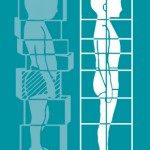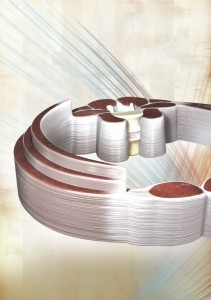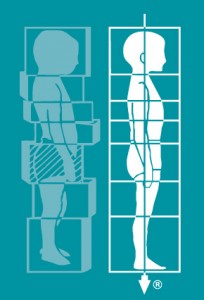Posture, Gravity and Rolfing
How well do you manage being upright?
Does everything feel like it is in the right place?
Do you stand easily?
The common belief seems to be that we must hold ourselves up, and yet in an architectural sense, we cannot do this. There is no skyhook to suspend ourselves from. Support comes from below, as in any building. Weight falls, that’s just gravity in action. Everything is designed to live in gravity.
Even our language reflects this.
We feel up / or down
high / low
uplifted / heavy
light / a drag
Rolfing is a method of bodywork designed to address our imbalance and struggle with gravity.
We are designed to be at ease in gravity, efficient, upright, mobile and supported. Rolfing aims to bring the body back towards our natural state of balance and mobility, a feeling of being properly aligned.
When a body gets out of alignment in gravity, it must manage that strain. It does that by bracing, laying down more tissue along the path of the strain. This tissue, specifically, is the connective tissue, or fascia. Fascia can be seen in the body as the ligaments and tendons, and is also the fine filaments and membranes wrapped around every bone organ and muscle in the body. Connective tissue (CT) is a continuous fabric throughout the body, from layers around the spinal cord and brain, right out to the superficial fascia under the skin.
Much as a callous develops from continuous rubbing or pressure on the skin, so the fascia thickens and toughens to handle the constant effort of dealing with misalignment in gravity. Your tight shoulders may be able to relax the muscular effort, but the fascia is still holding the older pattern of repeated holding.
Posture can be seen as the verb in this, it is the doing. Structure is the long term effect of that doing. As we repeat the posture over and over, the fascia braces, taking over where the muscles cannot continue the effort. Of course the nervous system is involved, learning and reinforcing patterns of behavior and movement, and even physically, as it too travels in that web of fascia.
Running with poor posture can lead to strain in the hips, knees and ankles, indeed any activity repeated often without the proper alignment will lead to strain and perhaps even injury. Sitting slumped in front of the computer shows a lack of support and a corresponding need to brace and hold. The head forward posture of so many at the computer demands the 3 kilos or so of the head be managed, usually by the musculature and fascia of the back and neck.
Rolfing is a method of working with these old strain patterns to realign the body. It is a scientific and systematic approach to the whole body and our relationship to gravity. Each of the series of ten sessions has a specific anatomical focus, breathing, feet and legs, shoulder girdle etc. The process is carefully designed to meet the needs of each individual, so whether you have high arches or low, the second session is about organizing the feet and lower legs, beginning the task of finding support from below.
Rolfers work directly with that connective tissue, feeling for the holding patterns and slowly easing the strain. This is hands on work, with a strong educational component, bringing the client back into their body, heightening awareness of both the older pattern and the difference as it releases, the possibility of being a different way, one without effort and strain. Your Rolfer will look at how you stand walk and sit, even at your preferred sport or recreation, be it yoga or running, cycling or weights. Working from the outside in, and from the ground up, the whole body is brought back towards alignment and ease in gravity.
Part of the bigger goal of Rolfing is to restore our adaptability, our ability to swing between appropriate responses to our environment, which of course includes other people. When we compare some of our language, we can see how linked to gravity it is.
bent / graceful
twisted / open
stuck / spacious
held / balanced
off centre / grounded
unbalanced / centered
tight / flexible
Recognize some of these states? See also how they have an emotional as well as physical? Could it be that they are in fact the same thing? That when the body is organized in the gravitational field, that you in turn feel uplifted, balanced and open emotionally?
When we talk of our emotions we talk of feeling, as if it were a sensation. It is! A physiological shift happens as part of emotional response. Maybe the belly, the jaw or the eyes tighten in fear or anger, or we expand and relax in joy and safety.
From weekend athletes to professional sportsmen, people with chronic pain, poor posture and…………., many different people come to Rolfing for relief of pain, improved energy levels and performance, and for the opportunity to feel ‘normal’ in their bodies. This is a place defined by lift, ease, and a lack of restriction and pain.


 Next Post
Next Post

